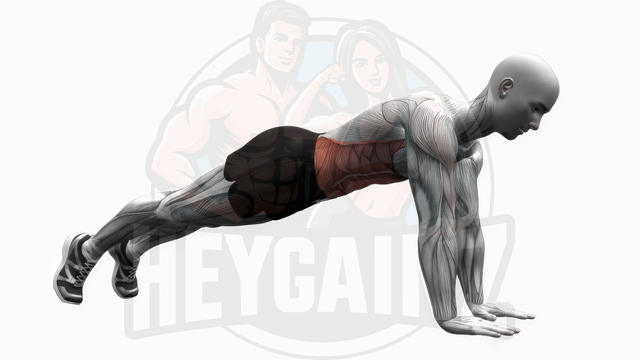
Instructions:
- 1Get down on your hands and toes and align your body in a straight line
- 2Keep your legs and arm straight, and your hands should be right under your shoulders
- 3Maintain this position.
Tips:
- Keep your neck in a neutral position
- DonÆt hunch your back
- Keep your core tight and maintain a smooth breathing pattern
Understanding the High Plank Exercise
The high plank is a fundamental exercise that forms the foundation for many strength training and bodyweight workouts. This position not only promotes core stability but also enhances overall body strength and alignment.
In the high plank position, your body forms a straight line from head to heels while resting on your hands and toes. This alignment engages multiple muscles, including the shoulders, chest, and core, making it an effective full-body workout. It’s often compared to the low plank, where the forearms are used instead of the hands, resulting in a slightly different muscle emphasis.
Benefits of the High Plank
Performing the high plank provides several benefits:
- Core Strength: This exercise effectively targets the abdominal muscles, promoting core stability.
- Upper Body Engagement: High plank variations like high plank shoulder taps and high plank jacks challenge the arms and shoulders while enhancing balance.
- Versatility: The high plank can be easily modified into various forms, such as the high plank to low plank transition or the high plank pull through, to keep your routine dynamic and engaging.
Tips for Mastering the High Plank Hold
To maximize the benefits of the high plank, consider the following tips:
- Maintain Proper Form: Ensure your wrists are directly beneath your shoulders and your body remains in a straight line.
- Engage Your Core: Actively tighten your core to stabilize your body and prevent sagging or arching.
- Breath Control: Breathe steadily throughout the hold to maintain focus and endurance.
Incorporating High Plank in Your Routine
The high plank can be included in various workouts, whether in yoga practices, HIIT sessions, or as part of a strength training regimen. Explore adding variations like the high plank to enhance your workout. For example, try moving from a high plank to a low plank for further challenge, or integrate high plank shoulder taps to increase the intensity.
By practicing the high plank, you’ll not only build strength but also develop greater body awareness and control, essential elements for any fitness journey.